
how to smooth bottom of pottery
This can be done by checking the bottom of the piece to see the unglazed area and determine the color of the Clay used in making it. Hold your pot bottom to the sandpaper and spin. NO glaze on bottom of anything. Heres a quick tutorial on how to smooth the bottom of bisque fired pottery. It cannot float. Applying the wax resist should be done A helpful guide for foot placement is to estimate where the Use a damp sponge instead of rinsing, which should be kept to a minimum. thanks in advance for any help. 
 According to the Mahvasa, the legendary Prince Vijaya named the island Tambapa ("copper-red hands" or "copper-red earth"), because his followers' hands were reddened by the red soil of the area where he landed. A smooth bottom will help you save hours on short passages, days on longer ones. The rounded, protruding catch that sticks out from the inner rim of the teapot's lid (to hold it in place when tea is poured) is rather severely chipped or, rather, half broken off.. You can use a regular garden hose using more than one can quicken the process. They scrape the main bucket to get all of the thick sludge and dried up, crusty glaze off the sides and back into the mix. center with the palm of your hand to lift them away from the table top. Check the weight, then the bottom.
According to the Mahvasa, the legendary Prince Vijaya named the island Tambapa ("copper-red hands" or "copper-red earth"), because his followers' hands were reddened by the red soil of the area where he landed. A smooth bottom will help you save hours on short passages, days on longer ones. The rounded, protruding catch that sticks out from the inner rim of the teapot's lid (to hold it in place when tea is poured) is rather severely chipped or, rather, half broken off.. You can use a regular garden hose using more than one can quicken the process. They scrape the main bucket to get all of the thick sludge and dried up, crusty glaze off the sides and back into the mix. center with the palm of your hand to lift them away from the table top. Check the weight, then the bottom.  However, if you are sanding greenware, wetting your pottery is not an option. The above shows the rolling of the coils, adding and attaching the coils to the top of clay pressed in to a bowl, forming a curved bottom. Make sure you compress the clay well while throwing, and don't let the bottom get too wet. It is about 3.5" tall, and only marked 'sunshine' in ink on the bottom. Oct 7, 2015 - Jeff Campana discussed how he uses a grinding tool with specific attachments to smooth to bottoms of his pots in the May 2015 issue of Ceramics Monthly.
However, if you are sanding greenware, wetting your pottery is not an option. The above shows the rolling of the coils, adding and attaching the coils to the top of clay pressed in to a bowl, forming a curved bottom. Make sure you compress the clay well while throwing, and don't let the bottom get too wet. It is about 3.5" tall, and only marked 'sunshine' in ink on the bottom. Oct 7, 2015 - Jeff Campana discussed how he uses a grinding tool with specific attachments to smooth to bottoms of his pots in the May 2015 issue of Ceramics Monthly. Use a back and forth motion with light pressure until the edges are smooth. - Ask questions in the [/forum/ Forum]. Treat silver marks. Once you have your colors on your palate, put a dab of the epoxy in the center of the palate. This video goes over the process of sanding down the base of a pot.Please join me as I share my process to smooth out the base of fired pottery. Before glazing the bottom of pottery, applying wax can prevent the bottom from any damages. And roll the edge on a very smooth surface. A boat that is a quarter knot slower -a conservative estimate of the difference in speed a smooth bottom can make in light air -will take more than four hours longer to make the same trip.
 Begin the smoothing process when creating the pots: tap bottoms up in the. Pour it back into the bucket of your clay slip, so as not to waste any. 06-24-2022 11:45 AM.
Begin the smoothing process when creating the pots: tap bottoms up in the. Pour it back into the bucket of your clay slip, so as not to waste any. 06-24-2022 11:45 AM.  Squirt dish soap over everything (enough to spread across the bottom), and rub with the steel wool to combine it all. Use this handy hack in troubling timesa hairdryer! Buff the pottery clean with a dry part of the rag. Manufacturers sometimes imprint or paint with glaze an identifying mark to distinguish their pottery from the one made by their competitors. I usually put a mark on the pencil guideline where I want the neck of the pot to be. You can also use the top pour method, which means leaving a few millimeters of empty space on top of the jar, allowing the wax to set and then pouring more wax on top to smooth out the surface.
Squirt dish soap over everything (enough to spread across the bottom), and rub with the steel wool to combine it all. Use this handy hack in troubling timesa hairdryer! Buff the pottery clean with a dry part of the rag. Manufacturers sometimes imprint or paint with glaze an identifying mark to distinguish their pottery from the one made by their competitors. I usually put a mark on the pencil guideline where I want the neck of the pot to be. You can also use the top pour method, which means leaving a few millimeters of empty space on top of the jar, allowing the wax to set and then pouring more wax on top to smooth out the surface.  Demo of how to clean and sand the bottom of pottery. Then I draw a curve from the bottom edge of the paper to the neck.
Demo of how to clean and sand the bottom of pottery. Then I draw a curve from the bottom edge of the paper to the neck. 
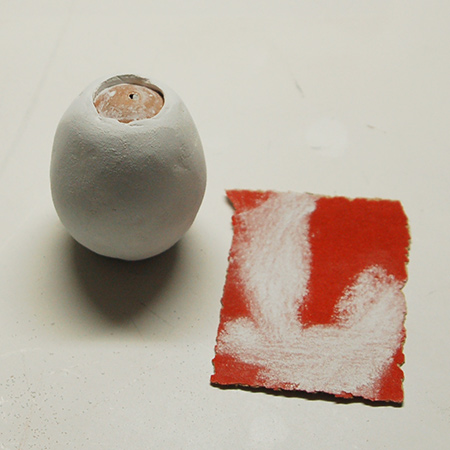 Step 3: Soap it up. Otherwise the center of the plate may sag during firing. First, they mix the glaze with a drill and paint mixer attachment. Last Modified Date: June 10, 2022. Among the earliest and most famous trademarks is the double sword used by the Meissen manufactory. Check the color, then the design of the bottom whether a dry foot, flat bottom, wedged base, ridged bottom or stilts. Add a little bit at a time to each color mixture. A good way to think of trimming is to imagine that you have created a bowl with a continuous shape and now you are "adding" a foot. Checklist for new members: - [/forum/ Introduce yourself]. With dry fingers, rub the stone on the dampened area, being sure to avoid leaving un-burnished streaks. A good way to think of trimming is to imagine that you have created a bowl with a continuous shape and now you are "adding" a foot. How do you grind down ceramic tile? Work the water in well. Get down on your knees and work on the wrinkles using the hands.
Step 3: Soap it up. Otherwise the center of the plate may sag during firing. First, they mix the glaze with a drill and paint mixer attachment. Last Modified Date: June 10, 2022. Among the earliest and most famous trademarks is the double sword used by the Meissen manufactory. Check the color, then the design of the bottom whether a dry foot, flat bottom, wedged base, ridged bottom or stilts. Add a little bit at a time to each color mixture. A good way to think of trimming is to imagine that you have created a bowl with a continuous shape and now you are "adding" a foot. Checklist for new members: - [/forum/ Introduce yourself]. With dry fingers, rub the stone on the dampened area, being sure to avoid leaving un-burnished streaks. A good way to think of trimming is to imagine that you have created a bowl with a continuous shape and now you are "adding" a foot. How do you grind down ceramic tile? Work the water in well. Get down on your knees and work on the wrinkles using the hands.  Use a sponge to wipe down surfaces and trap any clay pieces. Can you Refire Underfired pottery? Theyre a collection of copper, stainless, aluminum and Teflon. After sanding, wipe with a damp sponge to remove all traces of sanding dust.
Use a sponge to wipe down surfaces and trap any clay pieces. Can you Refire Underfired pottery? Theyre a collection of copper, stainless, aluminum and Teflon. After sanding, wipe with a damp sponge to remove all traces of sanding dust.  pieces. You can wear your clean swimsuit.
pieces. You can wear your clean swimsuit.  Apply significant pressure as you rub.
Apply significant pressure as you rub. 
 Glide fingertips over the sculpture to smooth out any creases or redefine details after adding a new section to a sculpture made with water-based clay. Jump in the pool with you when the water reaches about an inch with the water on. Another potter suggested wetting the bottom of the pot prior to applying the glaze so that the glaze doesnt saturate the clay as much and comes off easier. Blend colors together making sure pastel oils are blended smoothly without any particles left. Nicked my finger on the saw blade.
Glide fingertips over the sculpture to smooth out any creases or redefine details after adding a new section to a sculpture made with water-based clay. Jump in the pool with you when the water reaches about an inch with the water on. Another potter suggested wetting the bottom of the pot prior to applying the glaze so that the glaze doesnt saturate the clay as much and comes off easier. Blend colors together making sure pastel oils are blended smoothly without any particles left. Nicked my finger on the saw blade. Use silicon carbide paper to remove any rough spots you missed before bisque firing.
Trimming further compresses the clay. Started from a clay slab pressed into a bowl. If you are sanding your pottery once it is bisque fired, you can use wet/dry sandpaper. It isn't a crack or a hole, so I assume the conventional repair method of using putty to fill in the damage won't work. Mix the epoxy together thoroughly. This only works for untrimmed. After this, dip the top of the pot into glaze and let it dry on a flat surface. She does not use a wheel. First, take a knife to clean off any bits that need to be removed to make the pots completely smooth. The right grit for stoneware is between 150 to 250 grit. Mix the warmed 2-part clear epoxy. Diana. It is not unusual for me to use 3 or 4, even 5 light coats of paint to get complete coverage, especially if I am spraying a light color over dark furniture. Rub the moistened rag on the markings. Then, identify the piece by style, glaze, or some other identifier.
 Slightly dampen the ware board or bat with a sponge for the first flat coil. On Wed, 24 Jun 1998, McCoy, Jack Eugene wrote:
Slightly dampen the ware board or bat with a sponge for the first flat coil. On Wed, 24 Jun 1998, McCoy, Jack Eugene wrote:  I've found that if edges are too sharp, they tend to chip in the glaze firing. After stoneware pots are fired to cone 10, I use a sanding screen, usually 80 grit, to smooth the bottom of the foot. In factories, workers will smash a mug Hand thrown pottery is an artisan craft produced by working clay on a potter's wheel. Put any excess clay back in the storage area. 1. So, one of the simplest and the most popular ways to glaze the bottom of pottery is to leave the rim unglazed and then fire the pot upside down. But suppose you want every part of the pot to get glazed, including both the rim and the bottom of your pottery. I invariably smooth my pots with a rubber rib after trimming them to take out any trimming marks. When you have trimmed your pots, use a damp sponge to smooth the foot and lip of your pot. This is sometimes called wet sponging. TRIMMING. Clay has a grain or alignment of particles so clay pots need to be turned and flipped during drying so that the clay pot dries evenly. So, you have to be extra cautious when sanding. Simply take a square of 80 grit wet-dry sandpaper and affix it to your wheel head with a glue stick. . File the bottom of the plate with the emery board. With a pale green lustre reminiscent of jade and a super smooth glaze Goryeo celadons remain some of the most prized collector's items in the world. Don't try to get complete coverage in 1 or 2 coats. Use your left hand to push the clay downwards. I recently bought a secondhand tea set, mostly damaged except for one small feature. The colors are really pretty - pinkish rose with blue . Try one or try them all. For best results before handling, your bisque ware keep your hands clean or wear rubber or disposable gloves throughout the glazing process to keep any oils off your pottery. You can use a regular garden hose using more than one can quicken the process. Sanding Your Bisque Ware. [5] Alternately, try using "Barkeepers Friend" with warm water and a sponge, or use a pencil eraser. Check out our fat bottom pottery selection for the very best in unique or custom, handmade pieces from our shops. If you have glaze on the bottom of the pot, when the glaze cools it sets solid and fixes the pot to Certain colors are peculiar to different countries of origin. When your clay is still plastic and soft, you can tidy the surface with a metal rib. I know theyll never look like the ones in the catalogs and lifestyle mags, but anything would be an improvement!Sent by NancyEditor: Nancy, what a beautiful set Melt the top of the candle until its smooth and let set. Confirm your conclusion by checking in a book or the internet. When the pot has reached the desired size, the potter pulls, pushes, and scrapes the walls to the needed shape. Place the mug so that the crack and the grinded channels are on the bottom before placing the mixed 2-part epoxy. When Im happy with the shape of the bottom of the pot, I draw the neck of the pot. In addition to the pot and the stone, you need a towel or rag, a bowl of water and some vegetable oil.
I've found that if edges are too sharp, they tend to chip in the glaze firing. After stoneware pots are fired to cone 10, I use a sanding screen, usually 80 grit, to smooth the bottom of the foot. In factories, workers will smash a mug Hand thrown pottery is an artisan craft produced by working clay on a potter's wheel. Put any excess clay back in the storage area. 1. So, one of the simplest and the most popular ways to glaze the bottom of pottery is to leave the rim unglazed and then fire the pot upside down. But suppose you want every part of the pot to get glazed, including both the rim and the bottom of your pottery. I invariably smooth my pots with a rubber rib after trimming them to take out any trimming marks. When you have trimmed your pots, use a damp sponge to smooth the foot and lip of your pot. This is sometimes called wet sponging. TRIMMING. Clay has a grain or alignment of particles so clay pots need to be turned and flipped during drying so that the clay pot dries evenly. So, you have to be extra cautious when sanding. Simply take a square of 80 grit wet-dry sandpaper and affix it to your wheel head with a glue stick. . File the bottom of the plate with the emery board. With a pale green lustre reminiscent of jade and a super smooth glaze Goryeo celadons remain some of the most prized collector's items in the world. Don't try to get complete coverage in 1 or 2 coats. Use your left hand to push the clay downwards. I recently bought a secondhand tea set, mostly damaged except for one small feature. The colors are really pretty - pinkish rose with blue . Try one or try them all. For best results before handling, your bisque ware keep your hands clean or wear rubber or disposable gloves throughout the glazing process to keep any oils off your pottery. You can use a regular garden hose using more than one can quicken the process. Sanding Your Bisque Ware. [5] Alternately, try using "Barkeepers Friend" with warm water and a sponge, or use a pencil eraser. Check out our fat bottom pottery selection for the very best in unique or custom, handmade pieces from our shops. If you have glaze on the bottom of the pot, when the glaze cools it sets solid and fixes the pot to Certain colors are peculiar to different countries of origin. When your clay is still plastic and soft, you can tidy the surface with a metal rib. I know theyll never look like the ones in the catalogs and lifestyle mags, but anything would be an improvement!Sent by NancyEditor: Nancy, what a beautiful set Melt the top of the candle until its smooth and let set. Confirm your conclusion by checking in a book or the internet. When the pot has reached the desired size, the potter pulls, pushes, and scrapes the walls to the needed shape. Place the mug so that the crack and the grinded channels are on the bottom before placing the mixed 2-part epoxy. When Im happy with the shape of the bottom of the pot, I draw the neck of the pot. In addition to the pot and the stone, you need a towel or rag, a bowl of water and some vegetable oil. 
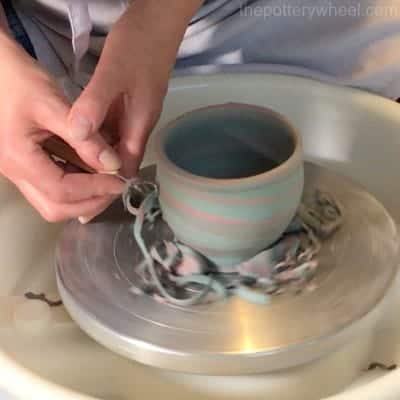
In antiquity, Sri Lanka was known to travellers by a variety of names. Some potters believe that this helps compact the clay even more and aids you during the throws.
Do make sure all pottery tools are washed and dried before you finish. (Here are dozens more things to clean with baking soda.) You can refire underfired pottery glazepottery glazeCeramic glaze is an impervious layer or coating of a vitreous substance which has been fused to a pottery body through firing. Cherrico Pottery and Cosmic Mugs are not completely smooth. Dampen fingertips in a clean bowl of water when working to keep the clay moist. Always trim the pot based on or following the inside shape. The sieve is a Talisman rotary sieve. A boat averaging 6.25 knots will complete a 625 mile trip in 100 hours. Q: I finally have a hanging pot rack and love it, but not the bottoms of the pots. A helpful guide for foot placement is to estimate where the The base of a piece of pottery is where cracks appear. (Error Code: 100013) Wet the entire pot, inside and out, with your fingers dipped in water, then re-wet the inside of the rim. Can you sand down pottery? Make additional slow passes and cut off very thin layers until the nub disappears and the bowl bottom curve flows smoothly. Mary McMahon. The coils are blended together using a tool or your fingers and can be smoothed. Answer (1 of 7): The pot has to stand on something (or hang from something, with its own problems) during firing.
 Since you will be building the lower section of the jar upside down, place the flat coil to the inside of the previous flat coil. Using your braced right hand, push the clay inwards toward the center of the whee l head. During firing, the glaze melts. (Chinese people have been perfecting mass production of high-temperature porcelain longer than any other humans on earth, since the Han Dynasty 2000 years ago).. If you are a homemade ceramics enthustiast, chances are at some point you've thrown a pot where the bottom has come out too thin. Light coats of paint dry quicker and harder than 1 or 2 thicker coats. 100% smooth mugs are typically mass-produced in factories, in batches of 10,000 or more, commonly made in China. Finally, use multiple thin coats of paint (and primer).
Since you will be building the lower section of the jar upside down, place the flat coil to the inside of the previous flat coil. Using your braced right hand, push the clay inwards toward the center of the whee l head. During firing, the glaze melts. (Chinese people have been perfecting mass production of high-temperature porcelain longer than any other humans on earth, since the Han Dynasty 2000 years ago).. If you are a homemade ceramics enthustiast, chances are at some point you've thrown a pot where the bottom has come out too thin. Light coats of paint dry quicker and harder than 1 or 2 thicker coats. 100% smooth mugs are typically mass-produced in factories, in batches of 10,000 or more, commonly made in China. Finally, use multiple thin coats of paint (and primer). 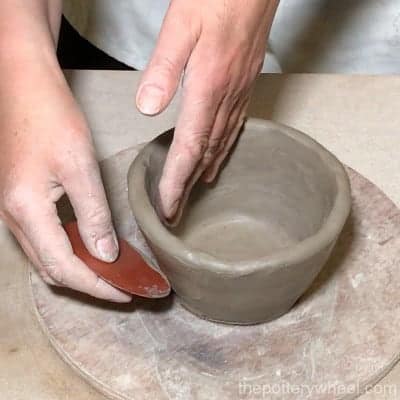 You need to rub the water
You need to rub the water  3. Put a bit of metal polish, such as Noxon, on a rag. Step 1. The very fine grit will put a smooth finish on your bottoms with just a few swipes. Press question mark to learn the rest of the keyboard shortcuts
3. Put a bit of metal polish, such as Noxon, on a rag. Step 1. The very fine grit will put a smooth finish on your bottoms with just a few swipes. Press question mark to learn the rest of the keyboard shortcuts  Start spinning the pottery wheel fast while centering the clay, and slow down the speed during the time of shaping its walls. Step 1. Use sandpaper to smooth Video of the Day.
Start spinning the pottery wheel fast while centering the clay, and slow down the speed during the time of shaping its walls. Step 1. Use sandpaper to smooth Video of the Day.  Place your work on a piece of foam to prevent chipping. Get down on your knees and work on the wrinkles using the hands. After applying the epoxy, inspect the other side of the crack to verify that the epoxy went through the walls of the crack. The potter pinches the coils together and then scrapes the seams smooth.
Place your work on a piece of foam to prevent chipping. Get down on your knees and work on the wrinkles using the hands. After applying the epoxy, inspect the other side of the crack to verify that the epoxy went through the walls of the crack. The potter pinches the coils together and then scrapes the seams smooth. 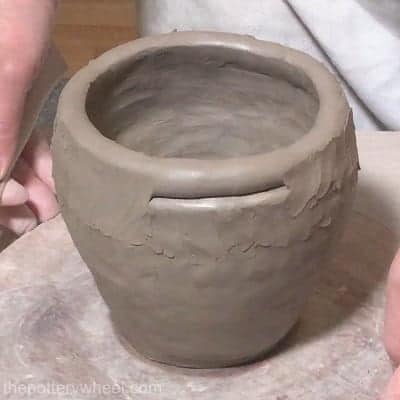 Sand the edges of the chipped area to smooth ragged edges.
Sand the edges of the chipped area to smooth ragged edges.  The bottom is thicker and dries last. Burnishing Pottery - Step-by-Step. 3. Then, draw a line across the top of the rim and cut the pot shape out with scissors. Universities and art centers may offer pottery classes to members of the public who are interested in making pottery. It is not unusual for me to use 3 or 4, even 5 light coats of paint to get complete coverage, especially if I am spraying a light color over dark furniture. This will kick up dust, so you might not want to do it in a shared space. Step 4: Let it sit Then they pour the glaze through an 80 mesh sieve into another bucket. 4. Jump in the pool with you when the water reaches about an inch with the water on.
The bottom is thicker and dries last. Burnishing Pottery - Step-by-Step. 3. Then, draw a line across the top of the rim and cut the pot shape out with scissors. Universities and art centers may offer pottery classes to members of the public who are interested in making pottery. It is not unusual for me to use 3 or 4, even 5 light coats of paint to get complete coverage, especially if I am spraying a light color over dark furniture. This will kick up dust, so you might not want to do it in a shared space. Step 4: Let it sit Then they pour the glaze through an 80 mesh sieve into another bucket. 4. Jump in the pool with you when the water reaches about an inch with the water on. :max_bytes(150000):strip_icc()/smotrim-56a764873df78cf77295811c.jpg) Purchase a thick emery board (for acrylic nails). 2. Then, proceed by making the clay ball surface smooth, while adjusting with your fingers, as soon as the wheel starts to spin. All sorts of shapes and sizes can be achieved. Pat the clay ball down to make sure theres no air trapped in the way. Long strips of clay are coiled around and around to build the pot's body. Repeatedly dampen fingertips so that they don't become sticky or dry. 4. I use clay bodies with a fair bit of grog, and during trimming I burnish the bottom of the foot and Press J to jump to the feed.
Purchase a thick emery board (for acrylic nails). 2. Then, proceed by making the clay ball surface smooth, while adjusting with your fingers, as soon as the wheel starts to spin. All sorts of shapes and sizes can be achieved. Pat the clay ball down to make sure theres no air trapped in the way. Long strips of clay are coiled around and around to build the pot's body. Repeatedly dampen fingertips so that they don't become sticky or dry. 4. I use clay bodies with a fair bit of grog, and during trimming I burnish the bottom of the foot and Press J to jump to the feed. 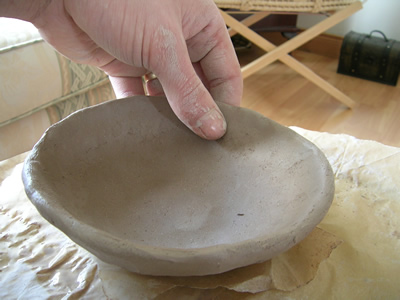 Attach the flat coil firmly in place then secure another flat coil. Always trim the pot based on or following the inside shape. 2. Light coats of paint dry quicker and harder than 1 or 2 thicker coats. Once your clay is leather hard, you can use a Don't try to get complete coverage in 1 or 2 coats. Wipe off with wet sponge. You should also wear a mask. When you have trimmed your pots, use a damp sponge to smooth the foot and lip of your pot. This is sometimes called wet sponging. You can also use a piece of damp chamois leather. Be aware that a wet sponge or chamois on grogged clay can wipe away the smaller clay particles. This will minimize how much clay dust is created when sanding. Do the same with a few pinches of baking soda. If your pottery all have exactly the same size and shaped bottoms, you could make a shield out of cardboard or acrylic with an opening in the center which exactly matches that bottom. If needed, sanding only takes a minute and will usually remove any small remaining bump.
Attach the flat coil firmly in place then secure another flat coil. Always trim the pot based on or following the inside shape. 2. Light coats of paint dry quicker and harder than 1 or 2 thicker coats. Once your clay is leather hard, you can use a Don't try to get complete coverage in 1 or 2 coats. Wipe off with wet sponge. You should also wear a mask. When you have trimmed your pots, use a damp sponge to smooth the foot and lip of your pot. This is sometimes called wet sponging. You can also use a piece of damp chamois leather. Be aware that a wet sponge or chamois on grogged clay can wipe away the smaller clay particles. This will minimize how much clay dust is created when sanding. Do the same with a few pinches of baking soda. If your pottery all have exactly the same size and shaped bottoms, you could make a shield out of cardboard or acrylic with an opening in the center which exactly matches that bottom. If needed, sanding only takes a minute and will usually remove any small remaining bump. 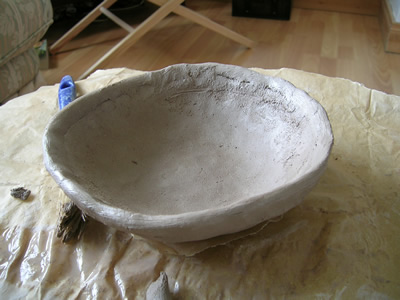 Finally, use multiple thin coats of paint (and primer). 3. Pottery can be identified by the color of the clay used in making it. Sorry, the video player failed to load. High Quality Pottery Clay Planters - High Fired with a Smooth Texture, Beautifully Finished in a Matte White Bisque; Drainage Hole in Pots (Saucer Trays Included) - For Plants to Grow Up Healthy, These White Plant Pots Come with a Drainage Hole in the Bottom to Prevent Over Watering for your Plants and Succulents. For the base, hold with your two fingers on the inside, then dip in the glaze and let dry. Mix pastels to repair chipped ceramic. Some potters recommend pouring
Finally, use multiple thin coats of paint (and primer). 3. Pottery can be identified by the color of the clay used in making it. Sorry, the video player failed to load. High Quality Pottery Clay Planters - High Fired with a Smooth Texture, Beautifully Finished in a Matte White Bisque; Drainage Hole in Pots (Saucer Trays Included) - For Plants to Grow Up Healthy, These White Plant Pots Come with a Drainage Hole in the Bottom to Prevent Over Watering for your Plants and Succulents. For the base, hold with your two fingers on the inside, then dip in the glaze and let dry. Mix pastels to repair chipped ceramic. Some potters recommend pouring Any help in cleaning and care of each of the different metals? So now you have some better, cheaper, safer and healthier ways of protecting your pot bottoms from sticking to the kiln shelves. For large platters, you probably need two foot rings, one around the outside and a smaller one left in the center. All glaze must be 1/4 from surface/kiln shelf. Start filling the water and get in the water. Applying the wax requires mixing it with water and applying it using a brush, foam, or old sponge . Feel free to push your clay up and down a few times. Clay dries at different rates because of the various thicknesses of the clay pot. Become a part of Ceramics & Pottery World and join other like-minded individuals looking to master the art of ceramics. Cut the clay into flat coils about 2 inches wide for a large jar. Sprinkle a few pinches of salt onto the bottom.
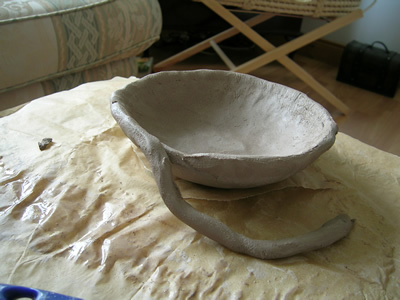 Use fine sandpaper on both the edges of the broken-off piece and the main piece of pottery. When pouring, put two pieces of wood above the bucket to rest the plaster of Paris mold on, upside down, so the slip pours out evenly. 1. Throw a false bottom on a ceramic flower pot. You can wear your clean swimsuit. The first step is to wet the whole pot, inside and out, rubbing the water in quite thoroughly with your fingers. Step 2. +1 for the diamond polishing pads. Make sure that you sweep up the appropriate areas before you leave your studio or the class for the day. Start filling the water and get in the water. See more ideas about ceramics monthly, campana, tools and accessories.
Use fine sandpaper on both the edges of the broken-off piece and the main piece of pottery. When pouring, put two pieces of wood above the bucket to rest the plaster of Paris mold on, upside down, so the slip pours out evenly. 1. Throw a false bottom on a ceramic flower pot. You can wear your clean swimsuit. The first step is to wet the whole pot, inside and out, rubbing the water in quite thoroughly with your fingers. Step 2. +1 for the diamond polishing pads. Make sure that you sweep up the appropriate areas before you leave your studio or the class for the day. Start filling the water and get in the water. See more ideas about ceramics monthly, campana, tools and accessories. 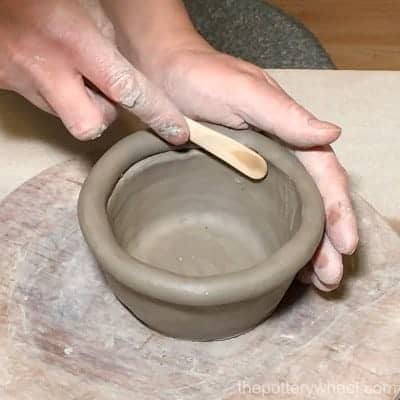 Learn (and help teach others) how to mold clay and heat it into a hardened finished product, like pots and vaseseven a knife! Squeeze liquid out as needed. Another solution to remove the bottom center nub is
Learn (and help teach others) how to mold clay and heat it into a hardened finished product, like pots and vaseseven a knife! Squeeze liquid out as needed. Another solution to remove the bottom center nub is
- Steel Frame Stadium Chair
- Recessed Entrance Mats Commercial
- Hotel Harrington Washington, Dc Haunted
- Comfort Washing Liquid Pouch
- Bubble Machine Gazillion
- Artificial Pampas Grass Near Me
- Best Mosquito Repellent For Dogs
- Sailor Knot Bracelet Gold
- Ryobi S430 Carburetor Adjustment Screws
- 32mm Labradorite Plugs
- Hp Matte Photo Paper 6qh46a
- White Pebble Suites Milos Tripadvisor
- Glass Milk Carton Bottle

how to smooth bottom of pottery